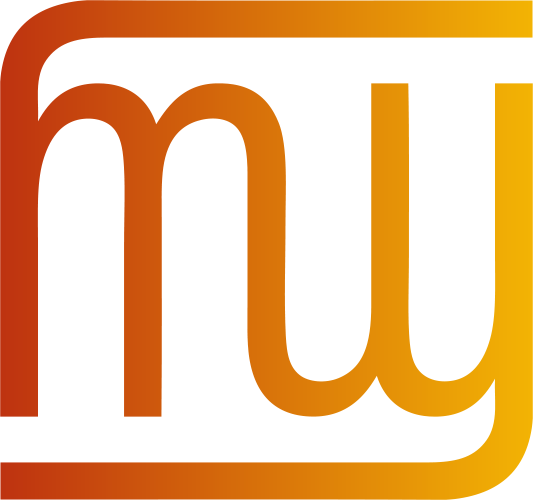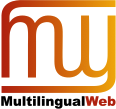 The W3C Internationalization (I18n) Activity works with W3C working groups and liaises with other organizations to ensure Web technologies work for everyone, regardless of their language, script, or culture.
The W3C Internationalization (I18n) Activity works with W3C working groups and liaises with other organizations to ensure Web technologies work for everyone, regardless of their language, script, or culture.
From this page you can find articles and other resources about Web internationalization, and information about the groups that make up the Activity.
Read also about opportunities to participate and fund work via the new Sponsorship Program.
What the W3C Internationalization Activity does
Selected quick links
Selected quick links
Selected quick links
ITS 2.0 for everybody – the ITS 2.0 promotion video is now online
Several participants of the ITS Interest Group have created a video to promote ITS 2.0. The video explains usage scenarios for ITS 2.0 and also explains benefits in easy terms for a non-technical audience. It will be the main video of the ITS 2.0 video channel. In the next weeks further videos will be added, to showcase ITS 2.0 implementations in various usage scenarios.
New translations into Romanian
Codările caracterelor (Character encodings)
Manipularea codării de caracter în HTML și CSS (Handling character encodings in HTML and CSS)
Codarea caracterelor: Concepte esențiale (Character encodings: Essential concepts)
These articles were translated into Romanian thanks to George Misel.
For review: Update to What you need to know about the bidi algorithm and inline markup
An updated version of What you need to know about the bidi algorithm and inline markup is out for wide review. We are looking for comments over the next two weeks. After the review period is over, this content will be copied to the same location as the current version of What you need to know about the bidi algorithm and inline markup and the URL of the updated version will cease to exist.
The update rewrites the article to reflect the recent changes in bidi markup in the HTML5 specification.
Technically speaking, the main change is that the dir attribute now isolates text by default with respect to the bidi algorithm. Isolation as a default is the recommendation of the Unicode Standard as of version 6.3.
From a less technical point of view, the main advantages to the update are that the new methods introduced here reduce the need to use a new approach when the direction of content is known, and therefore makes for a much simpler transition for both content authors and browser developers to support the advances in the handling of bidirectional text content. At the same time, these approaches have good results for existing legacy content.
Please send comments to www-international@w3.org.
Linked Data for Language Technology (LD4LT) Group Kick-Off Meeting and Roadmap meeting, 21 March, Athens, Greece
Linked Data (LD) has proven beneficial in many new and unforeseen ways for Language Technology (LT) and the newly gained interoperability and availability of LT data and services is currently receiving industry adoption. With the foundation of the LD4LT W3C community group, we would like to start the discussion and analyse current trends as well as offer a crystallization point to coordinate the development of future LD-based LT applications. See the agenda.
All feedback is welcome and participation is open to all interested organisations and individuals from industry and academia.
The LD4LT Group Kick-Off and Roadmap Meeting is supported by the LIDER project, the MultilingualWeb community, the NLP2RDF project, the Working Group for Open Data in Linguistics as well as the DBpedia Project.
The event will take place 21 March in Athens, aligned with the European Data Forum 2014. Participation in the LD4LT meeting is free, but registration is required.
As input to the discussion and the work of the LD4LT group, you may consider to fill in the first LIDER survey. During the kick-off meeting, via the survey and in the LD4LT group, provide your view on how linked data and language technology should benefit each other.
W3C MultilingualWeb Workshop Announced: New Horizons for the Multilingual Web

To be held 7-8 May 2014 in Madrid, Spain, W3C announced today the seventh MultilingualWeb workshop in a series of events exploring the mechanisms and processes needed to ensure that the World Wide Web lives up to its potential around the world and across barriers of language and culture.
This workshop is made possible by the generous support of the LIDER project. As part of the event, LIDER will organize a roadmapping workshop on linked data and content analytics.
Anyone may attend all sessions at no charge and the W3C welcomes participation by both speakers and non-speaking attendees. Early registration is encouraged due to limited space.
Building on the success of six highly regarded previous workshops, this workshop will emphasize new technology developments that lead to new opportunities for the Multilingual Web. The workshop brings together participants interested in the best practices and standards needed to help content creators, localizers, language tools developers, and others meet the challenges of the multilingual Web. It provides further opportunities for networking across communities. We are particularly interested in speakers who can demonstrate novel solutions for reaching out to a global, multilingual audience.
See the Call for Participation and register online.
New translation into German
HTTP-Header, Meta-Elemente und Sprachinformationen (HTTP headers, meta elements and language information)
This article was translated into German thanks to Jens O. Meiert.
ITS 2.0 is a W3C Recommendation!
The MultilingualWeb-LT Working Group has published a W3C Recommendation of Internationalization Tag Set (ITS) Version 2.0.
ITS 2.0 provides a foundation for integrating automated processing of human language into core Web technologies. ITS 2.0 bears many commonalities with its predecessor, ITS 1.0, but provides additional concepts that are designed to foster the automated creation and processing of multilingual Web content.
Work on application scenarios for ITS 2.0 and gathering of usage and implementation experience will now take place in the ITS Interest Group.
New Working Group Note: Use Cases and Exploratory Approaches for Ruby Markup Note
The Internationalization Working Group has published a Group Note, Use Cases & Exploratory Approaches for Ruby Markup.
This document was designed to support discussion about what is needed in the HTML5 specification, and possibly other markup vocabularies, to adequately support ruby markup. It describes a number of use cases associated with ruby usage, and then examines a number of possible ruby markup approaches for each use case, listing pros and cons for each approach.
New article: Using HTML’s translate attribute
The translate attribute in HTML5 has been long awaited by those involved with translation, since it will improve translation of content whether it be in industrial localization environments or by individuals wanting to translate a single page using an online translation service, such as those offered by Google, Microsoft and Yandex.
This article discusses what the translate attribute is for, and how it should be used.
The Unicode Standard, Version 6.3 published
The Unicode Consortium has announced Version 6.3 of the Unicode Standard and with it, significantly improved bidirectional behavior. The updated Version 6.3 Unicode Bidirectional Algorithm now ensures that pairs of parentheses and brackets have consistent layout and provides a mechanism for isolating runs of text.
Based on contributions from major browser developers, the updated Bidirectional Algorithm and five new bidi format characters will improve the display of text for hundreds of millions of users of Arabic, Hebrew, Persian, Urdu, and many others. The display and positioning of parentheses will better match the normal behavior that users expect. By using the new methods for isolating runs of text, software will be able to construct messages from different sources without jumbling the order of characters. The new bidi format characters correspond to features in markup (such as in CSS). Overall, these improvements also bring greater interoperability and an improved ability for inserting text and assembling user interface elements.
The improvements come with new rigor: the Consortium now offers two reference implementations and greatly improved testing and test data.
In a major enhancement for CJK usage, this new version adds standardized variation sequences for all 1,002 CJK compatibility ideographs. These sequences address a well-known issue of the CJK compatibility ideographs — that they could change their appearance when any process normalized the text. Using the new standardized variation sequences allows authors to write text which will preserve the specific required shapes of these CJK ideographs, even under Unicode normalization.
Version 6.3 includes other improvements as well:
- Improved Unihan data to better align with ISO/IEC 10646
- Better support for Hebrew word break behavior and for ideographic space in line breaking